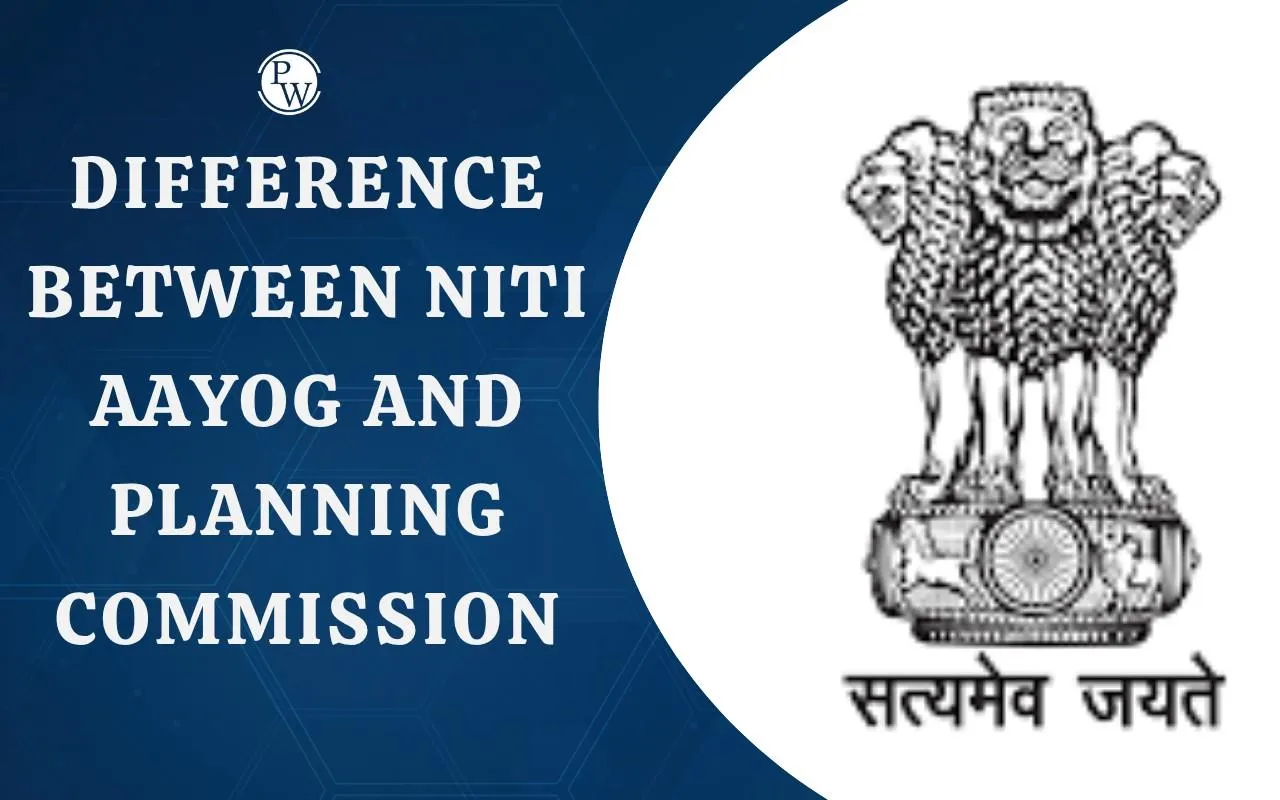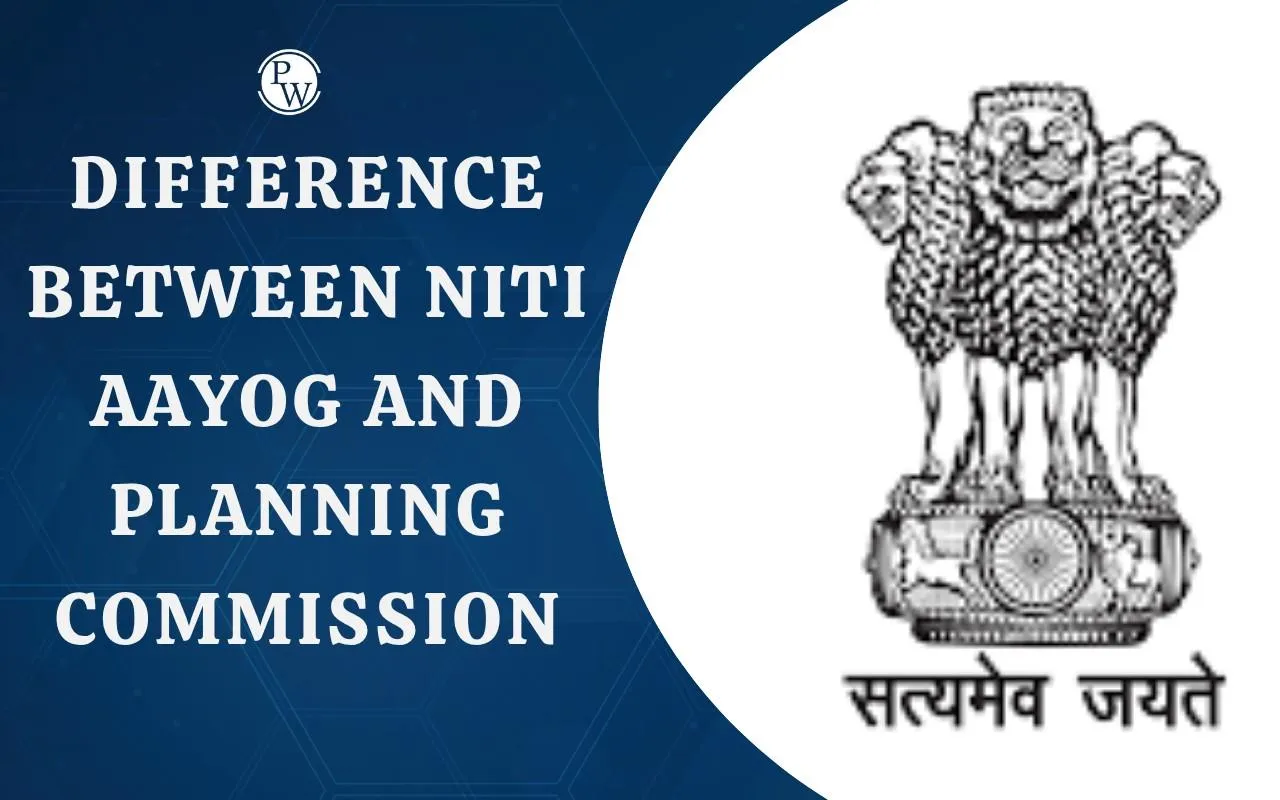

Difference Between NITI Aayog and Planning Commission: India is a large and diverse country. Such a large country needs proper planning and guidance to grow and prosper. The Planning Commission was the primary body for several years that looked after the country’s economic plans. Later, the Planning Commission was replaced by NITI Aayog in 2015.
Both these organisations were created to focus on planning to take the country forward. They worked towards making policies, guiding the government, and helping states in development. But their structure, role, and way of working are different.
Historical Background of NITI Aayog and Planning Commission
After independence in 1947, India needed a body that could plan and guide its economy. In 1950, the Planning Commission was formed by a government resolution.
-
Its main task was to prepare Five-Year Plans and decide how money would be given to states and projects. For decades, the Planning Commission played an important role in shaping India’s economy.
-
However, with time, many problems arose. The Planning Commission was often criticised for being too centralised. States felt they had little say in the decision-making process.
-
The needs of different states were not always addressed properly. In 2014, Prime Minister Narendra Modi announced that the Planning Commission would be replaced.
-
On January 1, 2015, the NITI Aayog was set up. NITI Aayog stands for the National Institution for Transforming India. It was created to give more power to states and promote cooperative federalism. Unlike the Planning Commission, NITI Aayog works as a think tank, providing ideas and strategies instead of controlling funds.
Structure and Role of NITI Aayog
The NITI Aayog is the main policy-making body in India today. Its structure is modern and flexible. NITI Aayog does not decide how funds will be distributed. Instead, it focuses on guiding, advising, and supporting states in policy-making. The structure and role of NITI Aayog are summarised in the table below:
|
Structure and Role of NITI Aayog |
|
|
Structure |
Roles |
|
|
Structure and Role of Planning Commission
The Planning Commission had a different structure from NITI Aayog. It was powerful because it controlled money distribution. States depended on it for financial support. But this also made it less flexible and sometimes unfair to states with unique needs. The structure and role of the Planning Commission are summarised in the table below:
| Structure and Role of Planning Commission | |
| Structure | Roles |
|
|
Differences Between Planning Commission and NITI Aayog
The Planning Commission and NITI Aayog are very different in how they are structured and how they work. While the Planning Commission focused mainly on money and planning, NITI Aayog is more about strategy, ideas, and teamwork between the centre and states. The difference between NITI Aayog and Planning Commission is summarised in the table below:
| Difference Between Planning Commission and NITI Aayog | ||
| Aspects | Planning Commission | NITI Aayog |
| Year of Formation | 1950 | 2015 |
| Type | Centralised planning body | Policy Think Tank |
| Chairperson | Prime Minister | Prime Minister |
| Primary Role | Prepare Five-Year Plans, allocate funds | Provide policy advice, promote cooperative federalism |
| State participation | Limited role for states | Strong role for states through the Governing Council |
| Financial Powers | Controlled allocation of central funds | No financial powers |
| Approach | Top-down (decisions from the centre to the states) | Bottom-up (involving states in decision-making) |
| Focus | Fund allocation and planning | Innovation, technology, policy support |
Differences Between Planning Commission and NITI Aayog UPSC
NITI Aayog has many advantages compared to the Planning Commission. These features make NITI Aayog more modern and adaptable to India’s changing needs. The difference between NITI Aayog and Planning Commission UPSC, with the advantages of NITI Aayog, is summarised as follows:
-
State Participation – States now have a stronger voice in decision-making through the Governing Council.
-
No Central Control of Funds – NITI Aayog does not control money. This reduces conflicts between the centre and states.
-
Flexibility – It can create short-term, medium-term, and long-term plans, instead of only fixed Five-Year Plans.
-
Expert Involvement – Specialists from different fields are included, bringing fresh ideas and knowledge.
-
Focus on Innovation – Promotes new technology, digital growth, and entrepreneurship.
-
Better Monitoring – Keeps track of programs in real time and ensures they are implemented effectively.
-
Cooperative Federalism – Encourages teamwork between the central and state governments.
Relevance for India’s Development
Both the Planning Commission and NITI Aayog played important roles in India’s journey. The Planning Commission helped India during the early years after independence. It supported industrial growth, the green revolution, and infrastructure projects.
But India’s challenges today are different. The country needs fast growth, modern technology, and active participation of states. That is why NITI Aayog is more relevant now. It provides new ideas, encourages innovation, and helps states design policies that match their needs.
